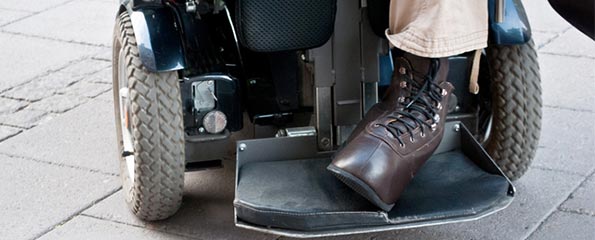Patients enrolled on this study have a type of blood cell cancer, other blood disease or a genetic disease for which they will receive a stem cell transplant. The donor of the stem cells will be either a brother or sister or another relative or a closely matched unrelated donor. This study tests if blood cells from the donor, that have been grown in a special way, can prevent patients from getting an infection with a virus called Cytomegalovirus or CMV.
Patients enrolled on this study have a type of blood cell cancer, other blood disease or a genetic disease for which they will receive a stem cell transplant. The donor of the stem cells will be either a brother or sister or another relative or a closely matched unrelated donor. This study tests if blood cells from the donor, that have been grown in a special way, can prevent patients from getting an infection with a virus called Cytomegalovirus or CMV. Study Type: InterventionalStudy Design: Treatment, Non-Randomized, Open Label, Uncontrolled, Parallel Assignment, Safety/Efficacy Study Official Title: Virus Specific Cytotoxic T-Lymphocytes for the Treatment of CMV after Allogeneic Stem Cell Transplant: A Dose-Finding TrialFurther Study Details: Patients will be evaluated in the clinic and will be eligible to receive CTL from day 30 post transplant if they meet eligibility criteria. CMV specific T cells will be thawed and given by intravenous injection. This is a traditional Phase I dose escalation study of one infusion of CMV-specific CTL given to patients at risk for CMV reactivation after matched related or mismatched related donor stem cell transplant. Three dose levels will be explored. The lowest dose level will be 1x10e7cells/m2 and the highest will be 1x10e8/m2. Three to six patients will be entered at each dose level (depending on toxicity) following the scheme below. This approach was successfully used in optimizing our EBV CTL infusion regime. If there are no toxicities and immunological efficacy is not seen at any dose, then the doses will be further escalated after additional local and federal approval. Eligibility Genders Eligible for Study: Both Criteria Inclusion criteria:Recipients of allogeneic donor stem cell transplants at risk for CMV reactivation with a CMV seropositive stem cell donor and at least 30 days post transplant. No evidence of graft-versus-host disease (GVHD) > Grade II at time of enrollment. Life expectancy > 30 days No severe intercurrent infections Lansky/Karnofsky scores greater than or equal to 60 Absence of severe renal disease (Creatinine > x 3 normal for age) Absence of severe hepatic disease (direct bilirubin > 3 mg/dl or SGOT > 500) Not receiving Ganciclovir, Foscarnet, or Cidofuvir Patient/guardian able to give informed consent Exclusion Criteria:Patients with CMV negative stem cell donors Patients with GVHD Grades III-IV Patients receiving antiviral therapy for CMV reactivation or other viral infections such as adenovirus or herpes viruses Patients with CMV reactivation defined as TWO consecutive CMV Antigenemia readings with greater than 2 leukocytes positive or ONE reading with greater than 5 leukocytes positive for the CMV Antigen. Patients with less than 50% donor chimerism in either peripheral blood or bone marrow or patients with relapse of original disease Expected Total Enrollment: 20 [1] Malcolm K Brenner, MD, Study Chair, Baylor College of Medicine CMV is a virus that can cause serious infections in patients with suppressed immune systems. It usually affects the lungs and can cause a very serious pneumonia, but it can also affect the intestinal tract, the liver and the eyes. Approximately 2/3 of normal people harbor this virus in their body. In healthy people CMV rarely causes any problems because the immune system can keep it under control. If the donor is positive for CMV, patients are at risk of developing CMV disease while their immune system is weak post transplant. Usually, this risk is highest during the first 3-4 months after the transplant. CMV disease can be prevented during this time in most people by using drugs that can kill the virus such as Ganciclovir or Foscarnet. However, these medications have many side effects and have to be given daily by vein for approximately 4-5 months after transplant. One of the side effects is that it takes the new immune system much longer to develop an effective defense against the virus. Therefore, once the medicines are stopped, patients still have a chance to develop CMV disease. We want to see if we can use a kind of white blood cell called T cells that we have grown from the patients stem cell donor instead of the regular treatment with Ganciclovir or Foscarnet to prevent CMV from “flaring up”. These cells have been trained to attack CMV virus infected cells. We will grow these T cells from blood taken from the donor before the transplant. These cells are called CMV-specific cytotoxic T-lymphocytes or CMV CTL and they will be given to the patient around 30 days after their transplant. We have used this sort of therapy to treat a different virus which can cause problems after transplant called Epstein Barr Virus (EBV). Condition:- Stem Cell Transplantation- Cytomegalovirus Infections
All content and media on the HealthEngine Blog is created and published online for informational purposes only. It is not intended to be a substitute for professional medical advice and should not be relied on as health or personal advice. Always seek the guidance of your doctor or other qualified health professional with any questions you may have regarding your health or a medical condition. Never disregard the advice of a medical professional, or delay in seeking it because of something you have read on this Website. If you think you may have a medical emergency, call your doctor, go to the nearest hospital emergency department, or call the emergency services immediately.







